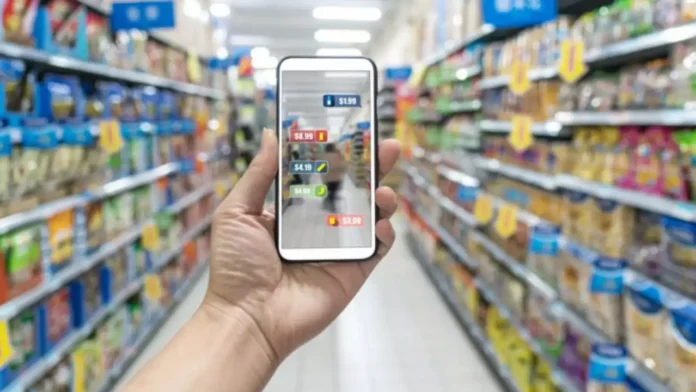Last month, Ghazal Alagh, co-founder of Mamaearth, India’s leading direct-to-consumer (D2C) brand, shared on social media platform X: ‘We continue to strengthen and expand omnichannel distribution with over 1.7 lakh retail touch points, increasing distribution by 37% year-on-year.’
The post confirmed a strategic shift by personal care company Honasa Consumer, owner of Mamaearth, to significantly expand its presence in physical retail over the past year, mirroring the trajectory of several other major D2C or internet-first brands in the country. Meanwhile, companies like meat delivery startup Licious and cosmetics firm Minimalist have opted for an omnichannel approach.
Continue Exploring: Citi Research bullish on Mamaearth, projects 24% upside potential with ‘buy’ rating
Millet-based snack brand Slurrp Farm, cosmetics makers Just Herbs and Sugar Cosmetics, lingerie brand Zivame, eyewear retailer Lenskart, wearables brand boAt, and beauty retailer Nykaa are among those that have launched brick-and-mortar stores.
Executives emphasized that for such D2C brands, entering retail channels entails a variety of strategies, including critical elements like workforce recruitment, which plays a pivotal role.
“When a pure play online brand goes into offline, it needs to adapt itself to the new channel at multiple levels, starting with the product assortment itself,” said Arush Chopra, CEO of Just Herbs, in which fast-moving consumer goods (FMCG) company Marico has invested. “Products that sell well online may not do as well offline as you are not catering to the ‘long tail’ niche customer anymore. So tweaks are required in the product strategy.”
Chopra suggests that when brands pursue offline expansion through distribution channels, earning the trust of trade participants is essential. Having an established online presence can significantly aid in this endeavor.
“Having the right team to execute and educate the consumer is also critical. You sometimes need seasoned folks from legacy offline businesses rather than people with startup experience to do so. So you need a team that has the agility of a startup and the experience and depth of knowledge of a legacy company,” he said.
Continue Exploring: FMCG giants raise prices by up to 10% to bolster profits amid slow demand recovery
Internet-first brands encounter challenges when transitioning to offline operations, particularly as they scale up to reach broader distribution through general trade channels.
“Offline is a tough model,” said Rajat Wahi, partner at Deloitte India. “All stores are of different sizes in India, and one needs to understand the nuances of how to manage inventories, damages and so on.”
However, for digital-first brands, supplying directly to retail points from their warehouses or shipping directly from their distribution centers tends to be more straightforward.
Several D2C brands have been acquired by large companies, leveraging the distribution capabilities of these entities. As a result, they aim to double their retail presence over the next 12-24 months.
“Our offline business grew from 400 to 5,000 stores between 2022-23, and we’re targeting a retail footprint of 40,000 stores by 2026. Overall revenue has doubled every year for the last three years and offline currently accounts for 30-40%,” said Meghna Narayan, co-founder of Wholsum Foods, which makes Slurrp Farm healthy mixes.
In an increasingly digital world, the value of physical touchpoints cannot be understated, said Chaitanya Ramalingegowda, co-founder of Wakefit.co, which makes premium mattresses and sleep solutions. “We have strategically expanded our offline footprint, now with over 50 stores nationwide. While our online platforms ensure convenience and accessibility, our offline stores serve as hubs of interaction and strong engagement where customers can touch, feel and experience the quality of our products first hand,” he said.
“We have observed that our offline AOV (average order value) is two times higher than our online AOV, said Ramalingegowda. “Online platforms are excellent avenues for research and data collection, while offline touchpoints offer families the opportunity to make collective decisions in a high-involvement category like home and sleep solutions.”
Hiring is key to topping up in physical retail, said executives.
“Traditional retail is all about strong trade relationships. The retailers and distributors have to be comfortable working with your sales team and hiring experienced folks certainly helps here,” said Chopra of Just Herbs. “Also, it is very important to hire sales people who specialise in this type of trade. For example, someone with general trade experience may not be suited to do pharmacies or someone with modern trade experience may struggle with general trade where relationships with the trade participants are key.”
Nykaa‘s offline store count reached 150 in the fiscal year 2022-23, showing substantial growth from 72 stores within a two-year period. Meanwhile, for audio wearables company boAt, nearly one third of its 4,000-crore sales now originate from offline stores.
Continue Exploring: Nykaa continues strong growth trajectory: Q3 net profit doubles YoY to INR 17.4 Cr





